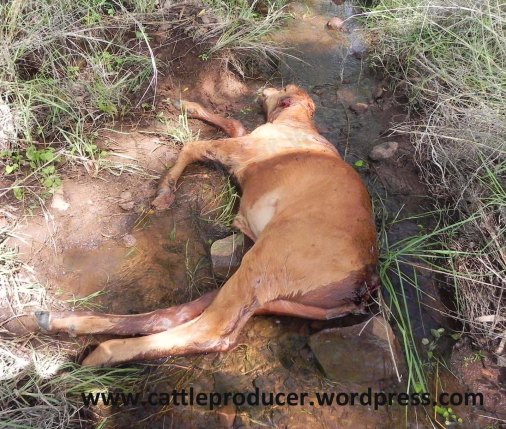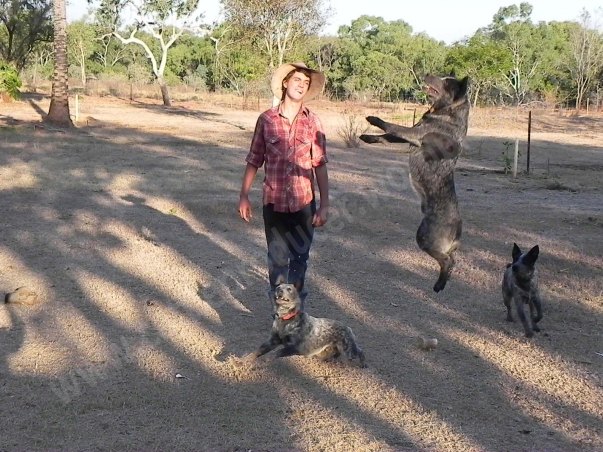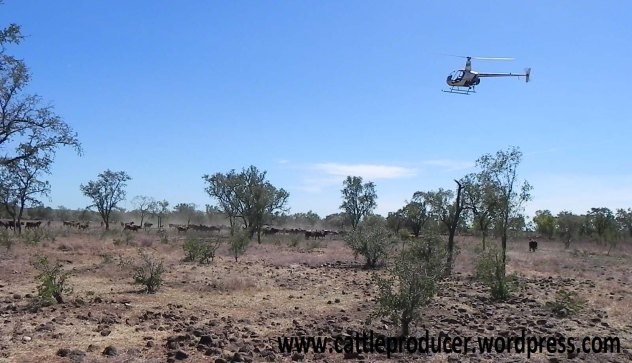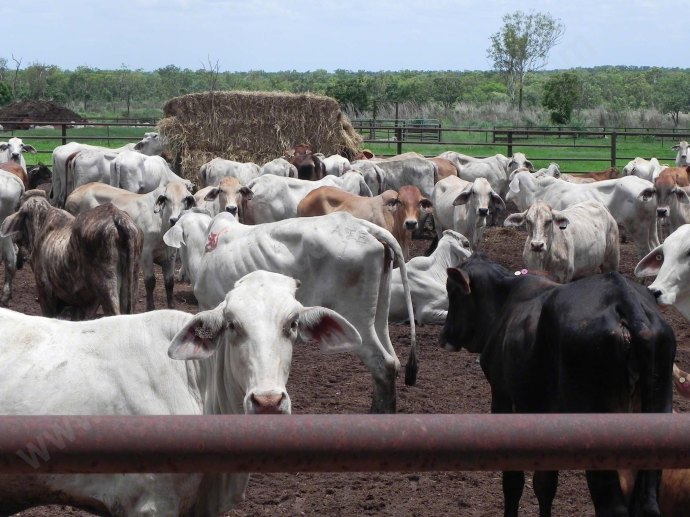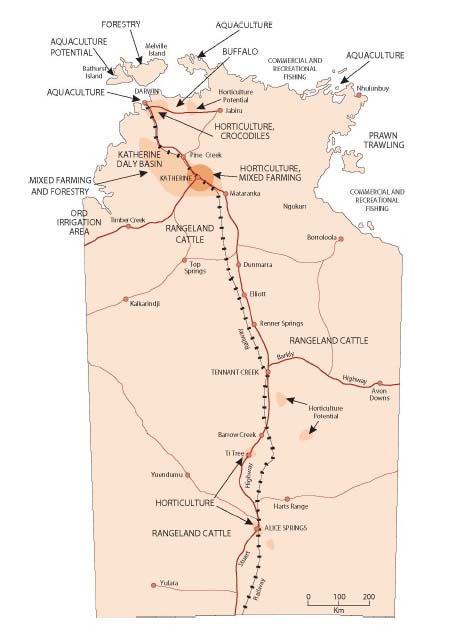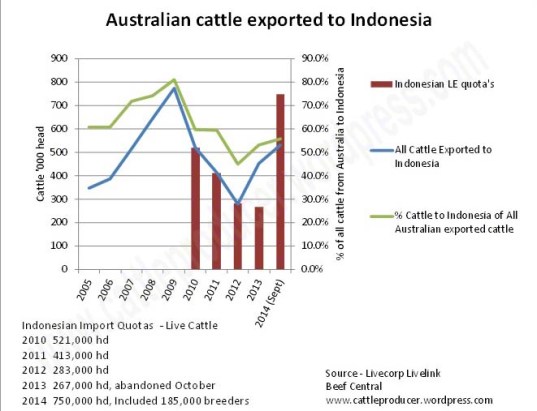When family and friends come to visit usually at some stage they in tend to go fishing, we have a number of natural water holes so we can generally catch something. (I’ve no idea what breeds, they are fish that’s about all I know).
Mind you there are also crocodiles and other bitey things in the waterholes so fishing is not my favourite thing. I prefer to stand back and admire the scenery.
.
Like most people who are on farms or pastoral stations the last thing we really have time for in the dry season particularly when mustering, is fishing. So unsuspecting family and friends tend to get roped into free labour of mustering and general property work before the fishing trip occurs, if it occurs at all.
.
Anyway visitors usually bring their paraphernalia of fishing gear and ‘stuff’ because of course we promise them if they come to visit then we’ll take them fishing.
.
This time we did take them fishing, of a very different type! The worst type of all, fishing gear out of a bore hole.
.
We’re heavily reliant on bore water for our stock and ourselves, so for water we pump from drilled bore holes. While we do live in the semi tropics and have waterholes and plentiful natural water in the wet, bores are absolutely imperative in the dry season. They allow a clean available water source for cattle and are vitally necessary for their optimum long term health and survival. We also use the water troughs and tanks in the dry to enable mineral supplementation. That is a liquid we place in drums with dispensers and the animals obtain the supplement through simply drinking from their troughs.
This is a blog I wrote a while back for Central Station in regards to Drilling for water.
.
We went to check a bore one day in late September and it wasn’t pumping. It wasn’t a critical period because the new steel tank we had there to hold water was full and we knew this allowed us at-least 1-2 days grace of fixing the bore and getting it pumping before the cattle would drain the storage and be thirsty. All the same it was important we repair the bore as soon as possible. So we went home and collected the gear we needed to ‘pull’ the bore which is a number of cables, clamps and winches. We set the gear up and got to work.
.
We’d had a very good run out of this bore’s gear and knew it was a number of years old, To have not corroded or broken down before this point in time was unusual as water electrolysis corrosion and general wear and tear tends to mean most bore equipment needs some form of maintenance or replacement every few years.
.
To understand how bore gear works it is important to envisage what is happening below the ground in regards to bore water. A bore is literally a very deep narrow hole of only 150mm diameter drilled into water bearing rock layers. There the ground water can be sourced from aquifers. For some areas this may mean you have to dig hundreds of metres, in others it may be very shallow. Here we tend to need to drill between 60-130m to hit good supply of water, and then the water is sub artesian. It actually rises closer to ground level above the point it enters the bore hole through slots in the casing. You place a pump down the hole and access the water.
For this particular bore we knew we had a bore that was a total depth of 61m, (that is reasonably shallow in the NT). It had pumping gear down to a depth of 42m and we knew the standing water level (SWL) was about 16m.

A diagram showing the bore hole attributes below the soil surface.
The pumping gear that had failed was the mono gear down the hole. It is a system of 2” column that screws together and is hung down the hole. Inside the casing is rod that runs the length of the column and is joined at the very base to a screw pump that actually draws and lifts the water.
This screw that lifts the water works on the Archimedes screw principle

Principals of the mono rod and column system used to lift water from a bore.
A motor is at the top of the bore and through a belt system and pulleys spin the internal rods of the mono very fast. The outside column stays stationary. The spin is transferred to the bottom of the rods to the screw pump which is inside a very tight rubber sleeve. As this spins, it sucks in water and forces it up the inside of the column and the flow moves to the ground surface to be used. The mono column and rods are in sections of 3m (10’) and each section has a joiner. On the column these are called collars on the rod they are thimbles.
When ‘pulling’ a bore we use pulley’s, clamps and very specific actions and processes to grab the column and lift it in sections to then hold under the collars and thimbles as we undo and remove lengths. Holding and removing a section at a time we unscrew and repeat the process until we have all the mono gear out of the hole. As you can only pull out 3m (10’) at a time it is a process that must be done very carefully and with considerable care.
We had 42m of gear to lift so that’s about 14 lifts and removals to do. I have no idea what column weighs but guessing 14 lengths of 3m column and rods would be about 1 tonne. Again not a great deal of gear or weight considering some bores can be extremely deep. It can be dangerous but everyone is particularly careful with bore work so things are checked and double checked. My husband and I have a system and we’re very particular about who does what, so it is a very measured process. The concern is to not have any items loose, everything is done slow and steady because if you drop the gear it will go sailing to the bottom of the hole and then you have all sorts of problems.
Prior to beginning to lift the mono we’d diagnosed what we thought was the problem, a broken rod. Not a big deal as we could clamp, hold and lift the column which would lift the rods and allow us to replace them. At the base of the column is a foot valve that should stop any rods slipping through the base of the pump but as a precaution we also have a rod clamp at the top that held the rods in-case that foot value has corroded away. Just because you have hold of the column doesn’t always mean you have hold of the internal rods if that base foot valve or pump has disconnected for some reason. We knew the rods were broken so we knew we didn’t have a clear connection of the rods all the way to the foot valve. We hoped the breaking of the internal rod had not caused so much damage to the external column that it had caused the pipe to completely break away as tends to happen if the internal rod has flogged around inside an already weakened pipe and cause a whipping action, further increasing damage to spilts or holes in the steel pipe walls.
We lifted a couple of lengths, no problem, It felt suitably heavy and we hoped if there was damage to the column they were only pitted holes and not an entire disconnect. Then quiet literally shit happened! Where the column had worn it had caused a tear rusthole to occur in the casing partially around it, when we had moved the column, we had aggrevated it further and the column itself had completely gave way because the thing actually holding it was the rod and its tight fit inside the lower sections of the column and further into the screw pump, with the weight and nothing to hold it up it fell to the bottom of the hole. All we had was what we had clamped at the top of the hole.
Sometimes things occur that when they happen, you can just see the dollar signs, My husband and I knew exactly what had happened when we felt and seen the cable jump, We went from having maybe 700kg of weight to now lucky to have 200kg We’d still had hold of at-least one length of column and rods but we knew we had just heard a gut wrenching sound of a lot of rod and column go sailing to the bottom of the hole. To say we felt sick instantaneously was an understatement. Getting dropped gear out of a hole is no easy feat and usually means the hole is stuffed. Not only would we have to drill a new hole at who knows what expense, it would have been near impossible to get a driller in any short time frame. We had 500 head of cattle needing critical water in less than 2 days and while we could move them to other bores, it wasn’t a good time to be over stocking other waters at the end of the dry. Plus we were still mustering, plus it was drying off, plus to drill a new bore meant we couldn’t do the other improvements we had planned, plus drillers are notoriously difficult to get, often booked out 12 months ahead, plus, plus, plus. All of this and more goes through your head in about 2 seconds, then replays into all the worst scenerios,none good and none cheap! My hubbie just looked up at me and I looked at him and said, shit bugger bum! (Actually I can’t write what we really said or thought, there just aren’t bad enough words).
Our son and family were off-siding for us and actually had no idea what had just happened. They just knew by our expression that something had just gone very, very wrong. We’d been grilling them all morning about being careful near the bore hole not to let spanners and tools sit too close. Our explanation to them now was “we have to go fishing”, it wasn’t exactly conveyed enthusiastically.
As it turned out we actually had hold of still a fair few lengths of column so in some ways that was relief, it meant less weight to lift if we managed to get what was lost. What was now at the bottom of the hole was about 20m of column that is 50mm (2”)in diameter and 30m rod that was 16mm (5/8”). What we needed to do was put a tool down to catch and pull it out. It sounds simple but it’s not.
We had to get this stuff out, but the top of the rods were now 21m from the surface and at-least 6m below water, luckily for us this is not a very long way in ‘bore language’, actually it’s pretty shallow, but it was still very awkward and did mean that any gear lost in the hole would make it very difficult to place another pump due to lack of space. The gear had to come out.
If you were absolutely desperate you can leave dropped gear in holes, if the depth and water levels are Ok, but it’s not a good idea and restricts the use of the bore hole significantly as it usually makes it difficult to pump from. Sometimes gear can fall down a hole but not always to the bottom, if its lodged partway it can stuff the whole thing.
Rob drew on some old experience, we had ‘fished before’. It is a small cars spring welded to the inside of a heavy piece of column, in the hope that what we can do is send the tool down the hole and fluke it sliding over the rod, far enough that the spring would catch under a thimble. It would hold it strong enough to lift everything back up and remove all the gear.

In theory the fishing tool will slide over the rod and column to allow the spring to jamb up under neath the thimble.
So back home we go to make the fishing tool. Back out to the bore we go to start fishing. It’s a simple idea but involves reconfiguration of the entire cable system and a lot of hands on touch and feel of the cable gently lifting the weight and trying to catch the rod. Remember we can’t see bugger all down the hole, it’s all by touch and the mind’s eye.
With the rod sticking so far out of the column it may have actually been leaning up against the wall of the bore. We needed to be careful not to the jam the ‘fishing tool’ down and actually push the rod into the wall of the PVC casing, that would have made it impossible to get it out.
So it’s not just a case of sending a heavy piece of metal down at a rate of knots and hoping it will grab, if we bent the top of the rods even if we did grab them it may mean we then have the rods jam into the bore casing and then we’d have the rods, column and fishing tool jammed down the hole with the cable. If we caught the bore hole wall casing there is the chance you can move it and then damage it thus again wrecking the bore as the casing is what holds the walls of the bore in place and breaking it can cause soil and rock to eventually cave the bore damaging the integrity of the whole thing.
We spent a full day trying to catch that gear with no luck, we decided that the cable we had wasn’t flexible enough so we sent an SOS to our neighbours to beg, borrow and plead if they may have any suitable cable. Luckily they did and so we drove over to borrow it, discussed all sorts of methods of bore recovery war stories, came home, set up and tried again.
By this time we did have thirsty cattle, thirsty cattle get destructive. It’s not a good thing. A thirsty animal will persist at any little point of moisture through licking or simply brute strength to get to what they think will be a water supply.
We tried again for another half day and just couldn’t get a grab to hold, we thought we had it but it slipped and went to the bottom again. By this time we were getting very worried. We had an audience of cattle who were simply watching and waiting and wondering what the heck was taking us so long.
We needed to move these cattle so we did, not an easy task as the other bores were not their normal bores and cattle being creatures of habit will return to the ‘home bore’ almost immediately.
The fishing tool was modified and refined and again we went fishing, we got it again, or I should say Rob caught it again and it was with very careful and extreme trepidation we lifted it out. It was such a relief to see rods emerge from that bore hole, even better when we had clamps locked on. Quick smart we pulled that mono gear out and we replaced the heavy stuff with new solar pump. Nice light poly pipe with a steel safety cable. If needed Rob, our son and I often pull these up and down by hand.
Most of the cattle we had walked away from the bore came back immediately when there was water available. We spent nearly 4 days fishing for that gear, through ingenuity and plain stubbornness my husband got it out. We were thanking our lucky stars that day. There are some horrid stories of gear dropped down bores and expensive redrills, we hoped we weren’t to add to them.
That fishing trip, we really did take the family fishing later, to be honest we needed an R&R day following the stress of that bore.
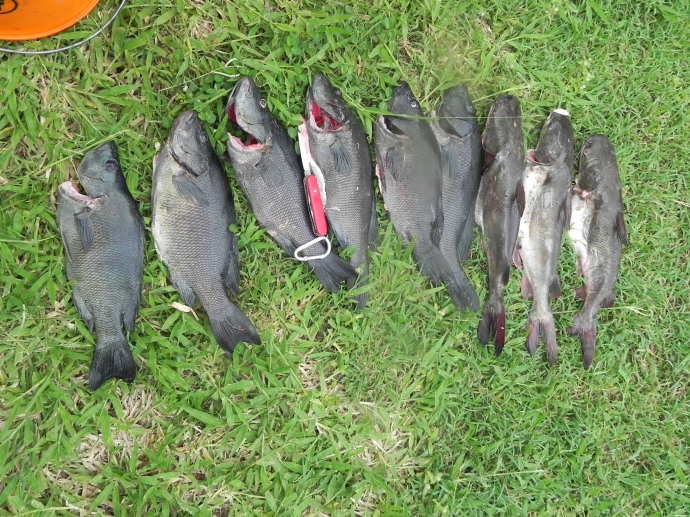
Fishes. They tasted good.











